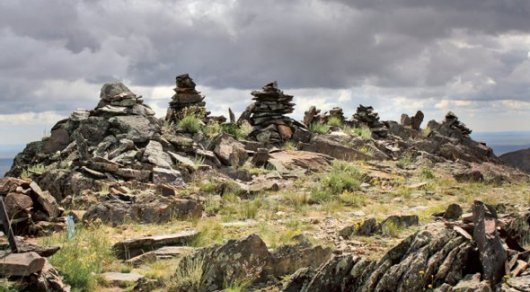ASTANA – The Kieli Kazakhstan (Sacred Kazakhstan) trip to the steppe country’s sacred places began from Nazarbayev University June 10. University Vice President Kanat Baigarin and General Director of the Kazakh Research Institute of Culture Andrey Khazbulatov gave a parting address to the 25 expedition participants.
“This is the first expedition along this route, but then there will be a long lasting and in-depth itinerary. The ministry determined a list of 500 major and more than 1,000 minor sacred objects. Our main aim is to continue regular expeditions. Then we will create an electronic portal, where all cultural and historical places are thoroughly described with a 3D survey of the places and maps of the journey. Anyone who wishes, Kazakh or foreign tourist, could use the internet to see the map,” said Khazbulatov.
Scientists and historians, including art historians from the Sacred Kazakhstan Scientific Centre, which organised the expedition, and specialists from the Kazakhstan National Geographic Qazaq Geography Society are taking part in the journey. They are measuring the scale of the monuments they find to compile a list of sacred places. As a result, an atlas of holy places of Kazakhstan will be created.
Participants will travel 15 days to the Caspian via Ulytau, in Central Kazakhstan, visiting sacred places of this region, famous for being the burial places of the descendants of Genghis Khan, including his oldest son Juchi Khan. They will continue their journey to the Zhuban Ana mausoleum, the Terekty sanctuary, the Bolgan-Ana tomb, the Korkyt-Ata complex, the Kesken Kuyuk-Kala settlement, Kambash Lake, Tassay Well, Akmysh, Sherkala, Shakpak-Ata, Kenty Baba, the Sultan-Ape valleys and the Beket-Ata and Meshitbai-Aulie necropolises.
According to Khazbulatov, the project will undoubtedly improve tourist infrastructure in these regions.
The first destination of the expedition was the historical and archaeological complex Terekty. There, participants visited Neolithic settlements, cave paintings of the Bronze Age and barrows and mazars (mausoleums) of the 18th and 19th centuries.
“There is a legend that one weary traveller reached this place. He was thirsty and powerless from the scorching sun. God pitied him. The stone slabs shifted, forming a shadow, and a stream of light began to beam from there. This place became an object of pilgrimage, where thousands of people now pray and make wishes,” said Altynai Birmukhanova, a researcher with the National Museum of Kazakhstan.
Academician Alkey Margulan was the first to record the Terekty-Aulieu petroglyphs during the Central Kazakhstan archaeological expedition in the 1950s, according to Birmukhanova.
“Historically, these places are important spiritual relics of our homeland. We want to study them and provide the widest coverage in the media in order to make every citizen of Kazakhstan know the history and culture of these objects. Many of these monuments are in poor condition; some have no roads or infrastructure. Our task is also to evaluate the tourist potential of these sites,” reported Qazaq Geography.
The study of the sacred places of Kazakhstan was one of the tasks formulated by President Nursultan Nazarbayev in his “Modernisation of Kazakhstan’s Identity” programme unveiled last April.
Scientists are conducting a large-scale expedition to find out which places citizens consider sacred, in order to further develop the sacred geography of the country.
“The status of something sacred is not given by the state. It is determined by the people. If they consider this place holy, it will be sacred, regardless of orders and decisions. We need to find out why the people consider a certain place sacred and visit it,” explained Director of the Sacred Kazakhstan Scientific Centre Berik Abdygaliuly.



